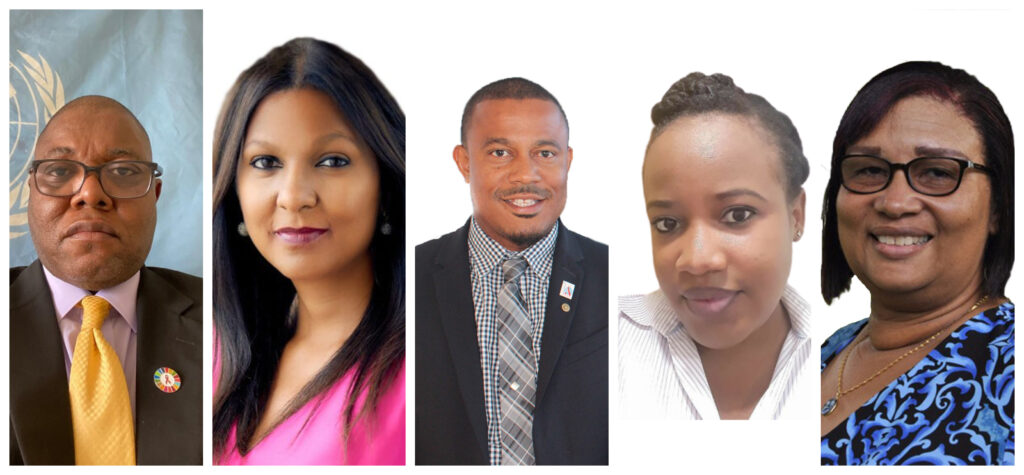
UNAIDS report on the AIDS epidemic shows that 2020 targets will not be met in the CaribbeanRegional governments asked to ensure the response is not set back further due to the COVID-19 pandemic
KINGSTON, 10 July 2020—A new report by UNAIDS shows that despite individual country successes, overall progress in the Caribbean to expand access to HIV services has slowed. Because of this, HIV targets set for 2020 will not be reached. The report, Seizing the moment, urges countries to act with greater resolve to reach those still left behind.
Caribbean 2019 data
There were an estimated 330,000 People Living with HIV (PLHIV) in the region at the end of 2019. Overall Caribbean adult HIV prevalence was 1.1%.
In 2019 77% of PLHIV in the Caribbean knew their status. This compares to the worldwide average of 81%. Eighty-one percent (81%) of diagnosed Caribbean people were on treatment last year. Eighty percent (80%) of those on antiretroviral therapy were virally suppressed. The global average was significantly higher at 88%.
Some countries have achieved elements of the 90–90–90 targets (90% of PLHIV aware of their HIV status, 90% of diagnosed people on antiretroviral treatment and 90% of those on treatment virally suppressed). Barbados has reached the target for testing while Guyana has exceeded it with 94% of PLHIV diagnosed. Haiti has gotten 98% of diagnosed people on treatment. Suriname and Trinidad and Tobago have achieved viral suppression among at least 90% of PLHIV who are on treatment.
“This shows that within the region there is the capacity to deploy the people, policies and programmes to end AIDS,” said UNAIDS Caribbean Sub-regional Office Director, Dr James Guwani. He was speaking at a virtual launch event hosted by UNAIDS Caribbean.
Last year there were 6,900 AIDS-related deaths in the region. Deaths due to AIDS decreased by 37% since 2010. Total antiretroviral treatment coverage for the region was 63%–71% for women and 56% for men.
New HIV infections decreased by 29% in the region since 2010. One-third of new HIV infections in the Caribbean in 2019 were among young people ages 15 – 24. Males ages 15 – 49 accounted for 57% of new infections.
“Year after year the data tell the story of Caribbean men’s inadequate access to HIV services. It is time for a comprehensive strategy to meet men where they are, increase demand and adapt service delivery to meet their needs,” Dr Guwani said.
Chair of the Spouses of Caribbean Leaders Action Network (SCLAN), Kim Simplis Barrow encouraged the region to increase access to education and sexual and reproductive health services for young people.
Great strides continue to be made in the Caribbean towards the Elimination of Mother-to-child HIV transmission, with seven countries and territories achieving World Health Organization revalidation. Mother-to-child HIV transmission reduced by nearly half since 2010.
Social inequalities and exclusion are key barriers
Sixty per cent of new infections in the region were among members of key population communities and their sexual partners in 2019. This includes 26% among men who have sex with men, 6% among sex workers, 5% among transgender people and 3% among people who use drugs.
“Access to care in most of our countries is hindered by several factors including criminalisation of same-sex relationships, hostile communities, homophobic discrimination, violence internal stigma, and limited health education,” said Dr Rosmond Adams, Director of the Pan Caribbean Partnership against HIV and AIDS (PANCAP).
Prejudice against PLHIV is still commonplace. The most recent data show that while discriminatory attitudes towards PLHIV are declining consistently in some countries like Belize and Guyana, they are rebounding in others.
“We have to engage people consistently around ending discrimination. We must also improve accountability and redress mechanisms when people’s rights are violated,” Dr Guwani said.
The COVID-19 pandemic could seriously disrupt the AIDS response
UNAIDS is urging countries to increase investments in both diseases. The 2020 Global AIDS Update notes that even before COVID-19, Caribbean state health systems were struggling to cover programmes traditionally funded by international donors, including HIV prevention and key population-focused initiatives.
Between 2010 and 2019 there was a 30% decline in disbursements by the Global Fund and a 19% decline in investments by the United States Government. HIV resource availability from domestic sources increased by 38% from 2010 to 2019. At present funding is 42% short of the level needed to effectively respond to HIV in the region during 2020.
Caribbean Regional Network of People Living with HIV (CRN+) Vice-Chair, Renatta Langlais, pointed to the strain COVID-19 placed on community organizations. She said despite funding cuts, they are being forced to do more work to serve clients whose incomes and healthcare access have been impacted by the COVID-19 response.
Executive Director of the Caribbean Public Health Agency (CARPHA), Dr Joy St. John, urged health authorities to adopt measures to assure the health of people living with HIV and those with non-communicable diseases.
“Continuous monitoring and re-evaluation of considerations for vulnerable populations at risk from COVID-19 are critical, as the demographics for COVID-19 are quickly changing,” she said.
CONTACT
UNAIDS Caribbean | Cedriann Martin | martinc@unaids.org
